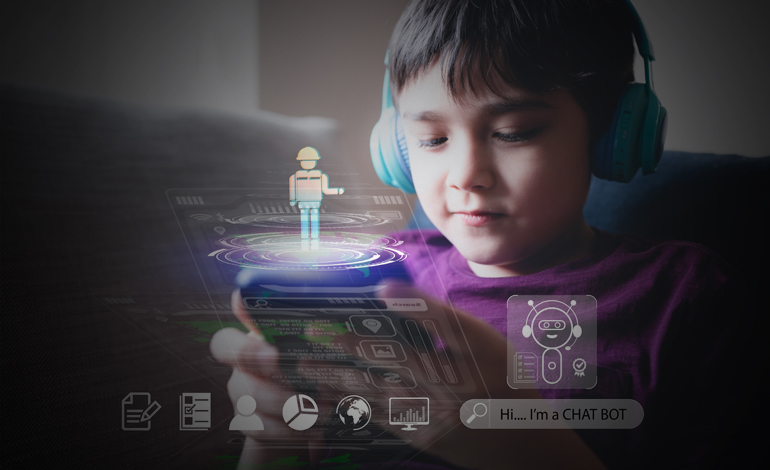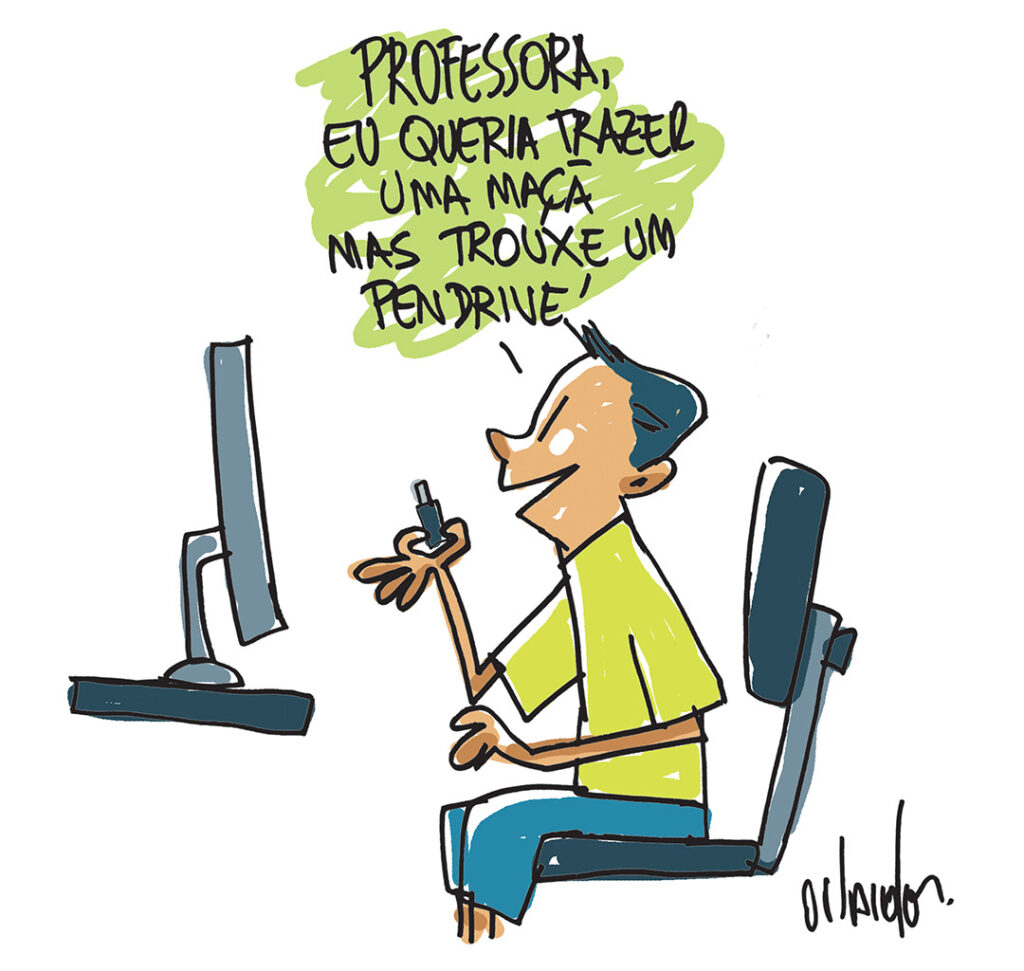Artificial Intelligence and Distance Education as teaching multipliers

Research involving artificial intelligence (AI) and education have been objects of study for a long time. Although the research field in Brazil is still incipient, in other countries related studies emerged about 20 years ago. Whether in formal education, or in informal educational environments, AI is set to assist teaching-learning relationships, becoming a powerful tool for teaching and data collection. It is possible to observe and understand the micro steps that students go through in learning a content. Students' errors and doubts give valuable clues to how learning happens and help provide data, making it possible to review the teaching didactics employed by teachers in the classroom, or even in distance education.
Fundamentally, AI-powered educational software interacts with the world in the same way that human intelligence itself would. To do this, models are created that follow the use of three patterns: the pedagogical model, the learning model, and the content model, turning AI into true tutors for students.
The intelligent tutoring system are tools capable of acting where a learning difficulty is identified. They are systems programmed to simulate individual tutoring, personalizing the teaching process in such a way as to become a private tutor, working precisely on the student's error and using data collected during their interaction.
Adaptive tutors include a number of tools that identify students' affective cognitive states and use this data in favor of learning, i.e., the student's good mood interfering with their ability to develop. AI uses dialogue to engage the student in reflective learning experiences in questions and discussions, or includes situations to promote reflection and self-reliance. It increases student motivation and engagement, as it is already common knowledge that the motivated student learns more easily.
This system, besides helping in a personalized way, generates valuable data for research on the learning process, signaling, for example, the passages where the greatest number of doubts are found, giving tips on how the learning mechanisms work in a specific way.
AI as a tool to expand education to the most remote areas
If AI has proven to be an important tool for progress in face-to-face education, imagine expanding these same benefits to more remote areas and reaching, on a large scale, groups that for geographical, political, or cultural reasons are far away. Distance learning (DL) platforms are already a reality in corporate education and in traditional education. Their benefits are absorbed into modern society. Adaptive distance learning platforms that use artificial intelligence are more sophisticated and already exist in countries such as the UK, Sweden, and the US. With this, they have transformed the ability to teach, bringing more playful and participatory methodologies, bringing together the benefits of AI with the massification of ED to different regions. Within the combined AI and DL platforms, classes and activities are offered, and the student is accompanied in all its processes. The systematization and analysis of collected data are passed on to the teacher to follow the progress of the student who, with this data, is able to make more informed decisions. Therefore, for the school, these combined platforms work as educational support with the data collected. For the student, they are used as an aid in certain subjects.

An ally against dropouts, absences and delays
There are also other ways to employ AI and ED in the educational field. Applications that identify potential dropout behavior by collecting and analyzing data such as attendance, tardiness, engagement in courses. Data that studies language, gestures, and physiological signals that the human body displays. These data identify signs of mood and depression in students and create ways to combat this self-sabotage of learning that students end up performing unconsciously. They are also able to analyze the characteristics of a student who is prone to drop out of the course, warning the tutor of this propensity, and activate the platform's own incentive tools to try to re-engage this student.
AI and EAD also help in the formation of groups of teachers to ponder on which training is most suitable to each individual's productivity, something that is often not accurately identified within the classroom.
The use of a wider network of analysis and data provides benefits in managing large groups and helps the learning process as a whole, even in environments where it would not be possible to be present, such as historical, or geographically inaccessible environments. They enable students to interact with the simulated environments, providing a degree of abstraction and reflection that an expository lecture could not.
All this already exists and is achievable in countries with the most deficient basic education. Thus, the use of artificial intelligence combined with the reachability of distance education platforms forms an exponential technological partnership capable of reducing educational inequalities around the world.
The social role of the school further expanded
We know that in underdeveloped countries schools play a role that goes beyond mere education. They are providers of basic food, hygiene, and even a safe haven for children who would otherwise be ostracized socially. ED, AI, and face-to-face education are not conflicting. On the contrary. They are complementary and synergetic. The social role of the school would be multiplied with the help of technology to reach more people in need of education. This requires strong encouragement from the public and private sectors, from NGOs, and from Foundations linked to education. If Silicon Valley was born from high public investment combined with the opportunities captured by private initiative, a parallel of this virtuous junction can be replicated in Brazil for basic education. Educational entrepreneurs such as Bing Chen, CEO of the American distance learning platform 2 Be Live, fill us with hope when he shows us the real impact on underprivileged children in the remote village of Krong Battambang, Cambodia, with the English classes taught by the educational platform. According to Bing, the cost of the hour/class on the distance education platform is infinitely less than that of face-to-face education, and the reach and impact on communities is unmatched. Moreover, it is increasingly difficult to find teachers who are able, or willing, to travel long periods and distances to remote places to teach. In Brazil, regions such as southern Bahia, Amazonas, or the interior of the North and Northeast are examples that I know of great educational shortages, where distance learning could help in basic education. These platforms are revolutionizing teaching and at the same time bringing a sense of joy and humanitarian completeness to the professionals who see their work germinating in the fertile land of educational need, bringing "remote" teachers within reach of students in rural areas.


